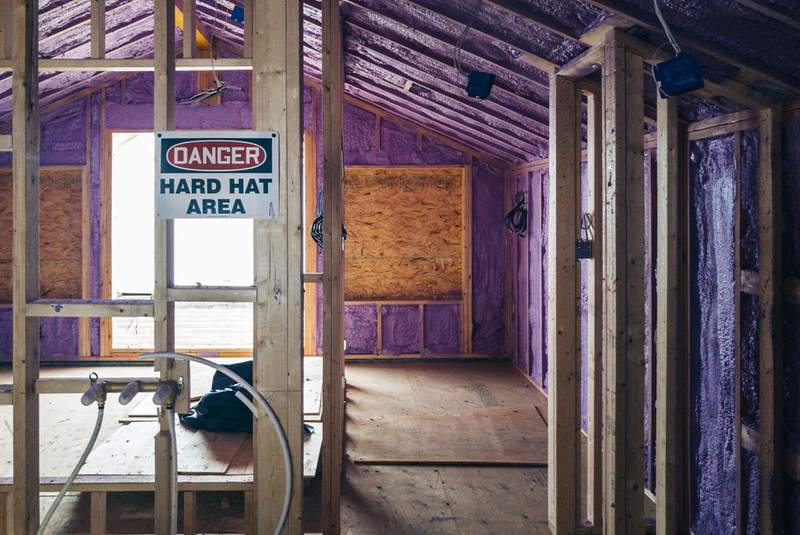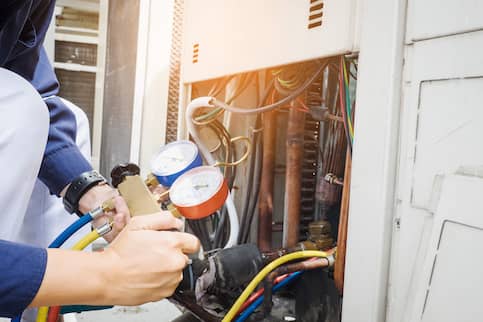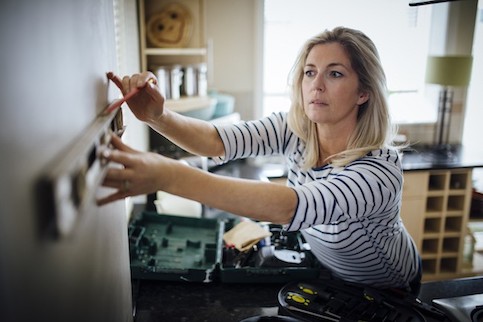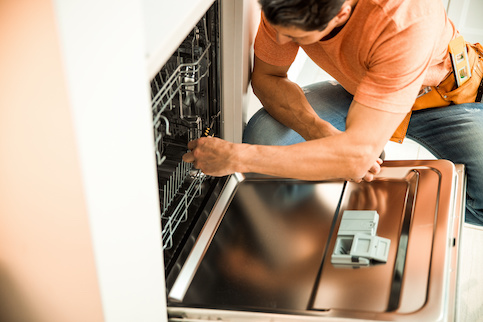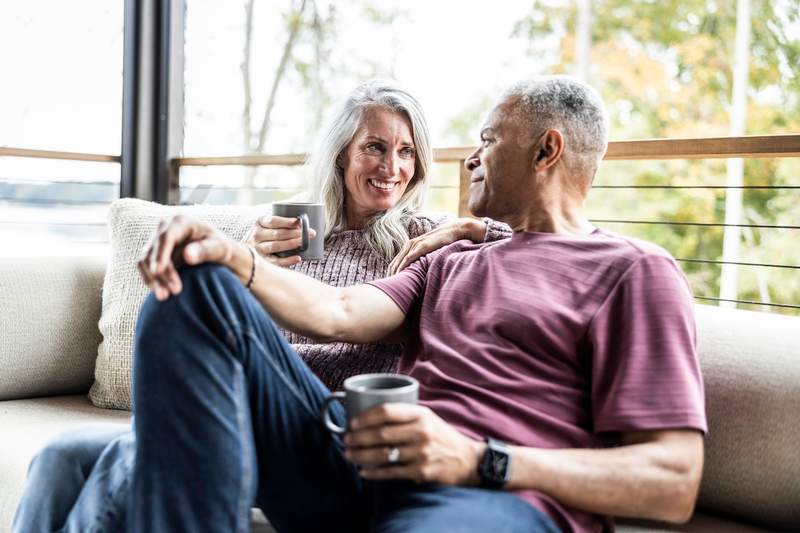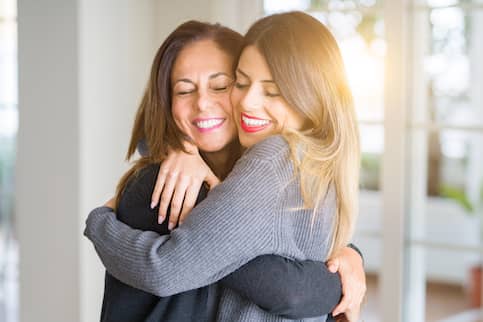When buying a home, there are several costs you need to pay besides principal and interest. Along with property tax, homeowners insurance is a major expense homeowners need to budget for. But how much is homeowners insurance? According to Insurance.com, the average cost of homeowners insurance in 2025 is around $2,601 annually, or $217 per month for $300,000 in dwelling coverage. However, it can fluctuate widely depending on location and value, among other factors.
Key Takeaways:
- Several factors impact the cost of homeowners insurance, such as your home’s value, age, location, risk of natural disasters, and more.
- Oklahoma, Kansas, Nebraska, Florida, and Colorado have the highest homeowners insurance costs, while Hawaii, New Hampshire, Vermont, Washington D.C., and Delaware have the lowest.
- Insurance costs also vary by company. For instance, Chubb homeowners insurance costs an average of $1,683, while the average cost from Travelers is more than twice that at $3,701.
What Determines The Cost Of Homeowners Insurance?
Many factors determine the cost of homeowners insurance. Here are some of the most common ones:
- A home’s value: Not only do more expensive properties come with higher insurance costs, so do larger homes with higher labor and material costs. This is because the more it costs to rebuild your home, the more dwelling coverage you need. Dwelling coverage is the part of your policy that covers the repair or rebuilding of your home’s physical structure in case of damage.
- Home features: Home features, such as the age and condition of a home’s roof and construction materials, can impact the cost of homeowners insurance. So can the presence of “attractive nuisances” – hazardous materials or features that may attract children, such as swimming pools, trampolines, and playground equipment.
- Age of your home: An older home will come with a higher insurance premium because it’s more likely to have an issue. For instance, one methodology found that a new-construction home has an average annual premium of $966, a 20-year-old home has an average annual premium of $1,670, and a 50-year-old home has an average annual premium of $1,700.
- A home’s location: Some areas are more likely to have claims due to crime, weather, and other outside factors, and this can cause your insurance cost to go up. For example, living near a fire station or fire hydrants can lower your premiums, while living in a neighborhood with higher crime rates, vandalism, and break-ins may increase them. Additionally, home insurance is regulated at a state level, so average rates can vary from state to state.
- Your coverage level: A home with a low deductible and minimal coverage is going to have cheaper insurance premiums than a home with a low deductible and several insurance riders.
- Your home’s risk of natural disasters: Home insurance may be more expensive if you live in an area vulnerable to wildfires, earthquakes, or hurricanes because of a higher likelihood of damage. This is an increasingly relevant consideration as the annual number of severe weather events continues to grow in the U.S.
- Your claims history: If you have filed a lot of claims in the past, you may have to pay higher home insurance premiums.
- Your credit: Some states allow insurance companies to factor your credit score into your premium cost. The idea is that if you have a high credit score, you’re less likely to file a claim or miss a payment.
How Do You Estimate The Cost And Coverage Of Home Insurance?
The point of home insurance is to restore your home and property to their pre-loss condition. So rather than basing your homeowners insurance coverage on the market value of your property, you instead need to consider the costs of rebuilding and replacing.
To estimate costs, determine the coverage you need by calculating the following:
- Replacement cost value (RCV) of your home: This is the amount of money you’ll need to actually replace your home, regardless of depreciation.
- Replacement cost of any detached structures: The same goes for additional structures on your property, such as sheds, barns, or garages.
- Replacement cost of personal property: You need to account for personal property too, such as furniture, appliances, and even family heirlooms. The best way to do so is to create a home inventory list to record all your possessions, along with their values and purchase prices.
Once you have a grasp on how much coverage you need, you can estimate your costs with an online calculator and compare quotes from various insurance companies.
Will My Homeowners Insurance Ever Go Up?
Yes, your homeowners insurance will go up. If you file claims, these could affect your premium. For example, if a tree branch falls, damages your roof, and breaks a window, you may be tempted to file a claim. Let’s say you’re quoted $1,200 for repairs and you have a $1,000 deductible. It may make more sense just to pay the whole thing out of pocket than to risk having your premium go up.
Other ways your insurance costs can go up include if you build an addition to your home or make significant renovations. These add value to the home, which means that if the home is damaged, the replacement cost will increase. On top of these, if you add a swimming pool, tree fort, or swing set, you may see your premium increase. These additions can add liability and medical risk, which can open you up to a lawsuit or medical costs due to injury.
But the truth is, insurance premiums can go up without you doing anything, too. In fact, many homeowners are experiencing insurance rate hikes right now. A major reason for rising rates is inflation. As housing costs and labor and materials costs go up, so do homeowners insurance rates. Houses cost more and it costs more to fix them, so homeowners insurance companies may pass the cost onto you.
What’s Your Goal?
Buy A Home
Discover mortgage options that fit your unique financial needs.

Refinance
Refinance your mortgage to have more money for what matters.
Tap Into Equity
Use your home’s equity and unlock cash to achieve your goals.
Do Homeowners Insurance Costs Vary By State?
Yes, homeowners insurance costs vary significantly by state. For instance, states with higher weather incidents, such as Oklahoma, come with higher homeowners insurance costs. Some states also mandate what is and isn’t included in standard homeowners policies. For instance, Hawaii excludes hurricane damage, which causes the state to have lower homeowners insurance costs.
To give you an idea of how much insurance costs can vary by state, consider the following monthly and annual premiums for the most and least expensive states for home insurance (assuming dwelling coverage of $300,000). If you have a mortgage, these are the amounts that will be part of your escrow payment, which is part of your monthly mortgage payment.
| State | Annual cost | Monthly cost |
|---|---|---|
| Most expensive: Oklahoma | $5,858 | $488 |
| Least expensive: Hawaii | $613 | $51 |
What States Are The Most Expensive?
Oklahoma, Kansas, Nebraska, Florida, and Colorado all have the highest homeowners insurance rates. The average rate for Oklahoma is $488 per month (about $5,858 annually) on a $300,000 home.
What do these states have in common? They all have a high number of natural disasters. Oklahoma, Kansas, Nebraska, and Florida have high numbers of tornadoes. Colorado also has its fair share of extreme weather, especially major storms and wildfires. High winds, hail, lightning, and fire can all cause a lot of damage, which is reflected in these high rates.
It’s also worth noting that in some states, it’s getting harder to insure a home, period. In places like Florida and California, natural disasters are causing some insurance companies to deny coverage, leaving consumers with fewer, more expensive options. For example, in Florida, nonrenewal rates have more than doubled in the last few years to 1 in 33 policies.
What States Are The Cheapest?
Hawaii, New Hampshire, Vermont, Washington D.C., and Delaware have the cheapest home insurance rates. Hawaii’s average annual rate for a $300,000 home is only $51 per month (about $613 annually), but this doesn’t cover hurricane damage. And keep in mind, the median home price in Hawaii is roughly $1 million, and the average annual insurance rate to cover a dwelling of this value is $1,831. So even though Hawaii’s home insurance rates are the cheapest in the country, most residents will pay for more dwelling coverage – and therefore have to pay higher premiums.
Places like Vermont and New Hampshire have low rates due to low risk. They’re less populated and less prone to natural disasters. Similarly, Washington D.C. and Delaware don’t experience many natural disasters, and they generally have moderate climates.
Does The Price Of Homeowners Insurance Change Based On The City?
Homeowners insurance statistics vary based on the city you’re in – and even within the same city. Cities with lower housing costs naturally have lower homeowners insurance. Also, cities that aren’t near water and don’t experience frequent natural disasters will have lower rates than cities that are along major rivers or near the ocean or that see tornadoes or hurricanes.
Proximity to places like a police station, fire station, or hospital can also impact premiums. If there’s an incident such as a fire, homes closer to city services will receive less damage, which translates to a lower rate. Places with a high crime rate will also come with higher insurance rates, as there’s a greater chance of vandalism or burglary, triggering a claim.
The following chart shows the average homeowners insurance costs for the top 20 largest U.S. cities.
| City | Average Annual Cost Of Homeowners Insurance |
|---|---|
| New York | $1,045 |
| Los Angeles | $1,921 |
| Chicago | $2,245 |
| Houston | $4,363 |
| Phoenix | $1,869 |
| Philadelphia | $1,910 |
| San Antonio | $2,944 |
| Dallas | $4,964 |
| San Jose, California | $997 |
| Austin, Texas | $2,862 |
| Jacksonville, Florida | $2,779 |
| Fort Worth. Texas | $5,190 |
| Columbus, Ohio | $2,077 |
| Indianapolis | $3,164 |
| Charlotte, North Carolina | $2,229 |
| San Francisco | $1,121 |
| Seattle | $1,047 |
| Nashville, Tennessee | $1,997 |
| Denver | $2,886 |
Ready To Become A Homeowner?
Get matched with a lender that can help you find the right mortgage.
What Are The Average Homeowners Insurance Costs By Company?
Not only do average homeowners insurance costs vary by location, they also vary by company. Below, you can find average annual costs from some of the largest homeowners insurance companies in the U.S. While noticing which companies have the lowest average prices can be beneficial, remember that your rate will still vary based on your individual circumstances.
| Company | Average Annual Cost Of Homeowners Insurance* |
|---|---|
| Allstate | $2,098 |
| American Family | $2,489 |
| Amica | $2,000 |
| Chubb | $1,683 |
| Erie | $2,183 |
| Farmers | $3,194 |
| Nationwide | $2,746 |
| Progressive | $3,193 |
| State Farm | $2,169 |
| Travelers | $3,701 |
| USAA | $2,506 |
Take The First Step To Buying A Home
Find a lender that will work with your unique financial situation.
What’s Covered Under Homeowners Insurance?
Knowing how much homeowners insurance costs is just the beginning. Next, you’ll need to know what that cost covers. In general, homeowners insurance covers these items:
- Your house
- Other structures like fences and sheds
- Personal property on your property
- Liability for things that happen on your property
- Medical payments if someone is injured on your property
However, note that there are exclusions. One major one is that standard homeowners insurance doesn’t cover flood and water damage. This can be problematic — especially knowing that just one inch of water can cause more than $25,000 worth of water damage to your home. If you live in an at-risk area, you can buy private flood insurance (or other types of hazard insurance, such as hurricane insurance or earthquake insurance) as stand-alone policies.
Additionally, your homeowners insurance may not cover some damages if your home has been vacant for more than 60 days. So, if you’re taking an extended vacation or snowbirding, you may need to contact your insurance company to make sure you’re covered.
There’s also a distinction between insurance policies that cover cash value or that pay full replacement costs. Cash value pays out what your personal property is worth currently. So if your 3-year-old laptop is stolen in a burglary, they’ll pay you what it’s worth. That means they may pay you only $600, even if it would cost you $2,000 to replace it. Replacement cost coverage means just that – if your laptop is stolen, they’ll pay you the $2,000 it costs to replace it, for example.
Homeowners Insurance Versus Private Mortgage Insurance
Homeowners insurance and private mortgage insurance (PMI) are two different costs. Homeowners insurance protects the homeowner and their property from damage and other risks. PMI is a charge put on conventional mortgages where the homeowner has less than 20% equity. This is insurance for the lender in case the homeowner doesn’t pay their mortgage.
You can’t get rid of homeowners insurance while you live in your home, but you can remove your mortgage insurance if you have a conventional loan. Once you reach 20% equity, call your mortgage lender and ask about removing your PMI. If you don’t request it to be removed, your lender will automatically remove it once you reach 22% equity.
How Can I Save Money On My Homeowners Insurance Policy?
While the cost of homeowners insurance isn’t completely in your control, you can do a few things to lower your bill. Below are several ideas:
- Consider your liabilities: Some insurers charge more for things like installing a swimming pool or having a dog breed they consider aggressive, which are considered potential liabilities. Before taking on these types of liabilities, consider how they may impact your premiums.
- Shop around: Get multiple quotes from several different companies and compare rates. Make sure the coverage limits and deductibles are the same on all policies so that you’re comparing apples to apples.
- Raise your deductible: Though a higher deductible means higher out-of-pocket costs, it also means a lower annual premium.
- Ask about discounts: Many insurers offer discounts to help customers get lower homeowners insurance rates. For example, insurers may offer discounts for bundling insurance policies or upgrading your home’s security features.
- Upgrade your home: Certain renovations, such as updating an electrical or plumbing system, placing a locked fence around your pool, replacing the roof, or adding natural disaster-proofing measures, have the potential to lower your homeowners insurance costs.
- Build your credit: Depending on where you live, your credit score can impact your cost of homeowners insurance. Generally, those with poor credit are likely to pay more. According to a study by Bankrate, those with poor credit pay roughly 77% more for homeowners insurance than those with excellent credit.
Homeowners Insurance Cost FAQ
You asked and we’re answering. Here are some frequently asked questions about homeowners insurance.
Also, research the type of insurance coverage you want. Just because one company offers a lower rate doesn’t mean it’s a better idea. Compare the rates, but also compare the coverage. The last thing you want to do is skimp on coverage and then end up regretting it due to a damaging disaster.
If you don’t have a mortgage, you may be able to elect to pay your homeowners insurance monthly. Just know that this can come with an increase in cost, often in the form of processing fees.
However, the easiest way to reduce your policy may be to shop around. You may be able to get a cheaper rate if you bundle your home and auto insurance policies with the same company. Other discounts you should look into include a paperless billing discount and a discount for adding home security.
The Bottom Line
So, how much is homeowners insurance? The real answer is that it depends. Your location, coverage, home value, and even your credit score can all come into play to determine how much you’ll pay. In states like Oklahoma and Kansas, you’ll see high average homeowners insurance costs, whereas states with less weather and natural disaster risk come with lower premiums.
When you’re buying a home, it’s important to research homeowners insurance costs in the area. These costs can be a major part of your monthly mortgage payment. Once you’ve decided on an area, shop around to see which homeowners insurance company will give you the best rate.

Ben Shapiro
Ben Shapiro is an award-winning financial analyst with nearly a decade of experience working in corporate finance in big banks, small-to-medium-size businesses, and mortgage finance. His expertise includes strategic application of macroeconomic analysis, financial data analysis, financial forecasting and strategic scenario planning. For the past four years, he has focused on the mortgage industry, applying economics to forecasting and strategic decision-making at Quicken Loans. Ben earned a bachelor’s degree in business with a minor in economics from California State University, Northridge, graduating cum laude and with honors. He also served as an officer in an allied military for five years, responsible for the welfare of 300 soldiers and eight direct reports before age 25.



